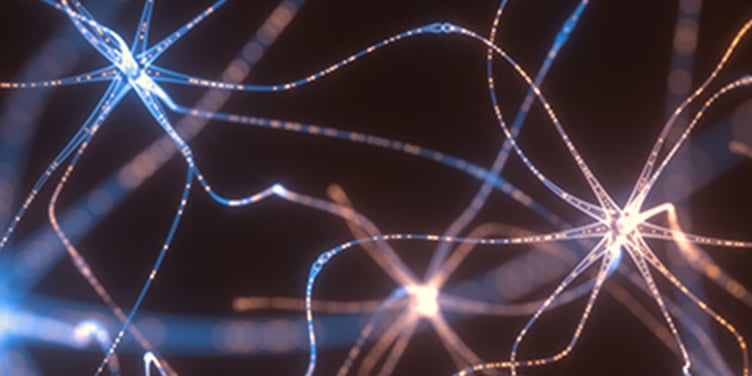A B C D E F G H I J K L M N O P R S T U V X Z
Actinium-225 — A radioactive element used in treatment that targets PSMA. It's similar to lutetium-177 but emits more powerful radiation and causes more side effects. While in use in other countries, in the U.S., it's still being evaluated in clinical trials.
Adjuvant therapy — Additional cancer treatments, such as hormone therapy or chemotherapy, given after surgery or radiation therapy.
Adrenal glands — Two glands – one located above each kidney – that produce several kinds of hormones, including a small amount of testosterone.
Androgen deprivation therapy (ADT) — A treatment to disrupt testosterone production and reduce testosterone levels in the body. This can be done through surgery (removing the testicles) or through drugs.
Androgens — A group of hormones, the main one being testosterone, that stimulate the development of male characteristics. Androgens also stimulate growth of most malignant as well as normal prostate cells.
Antiandrogen — A drug that prevents testosterone from stimulating prostate cancer cells, generally added to androgen deprivation therapy (ADT) either at the start of therapy or when the cancer progresses.
Antiandrogen withdrawal (AAWD) — A temporary syndrome some patients experience after discontinuing an antiandrogen. They may experience a decline in PSA, improvement in symptoms or tumor regression (a decrease in size).
Antibody-drug conjugate — A treatment that combines an antibody that can attach to a cancer cell with a drug that can kill the cancer cell.
back to top
Benign — Refers to a tumor that is not malignant (cancerous) and does not spread to other organs.
Benign prostatic hyperplasia (BPH) — Noncancerous enlargement of the prostate that may cause urination difficulty. A common condition in older men.
Biopsy — A procedure in which small samples of tissue are removed from the body for microscopic examination.
Bipolar androgen therapy (BAT) — A treatment that alternates androgen deprivation therapy with high-dose testosterone supplements.
Bone scan — A nuclear medicine imaging test used to screen for bone metastases (cancer cells that have spread to bones). A small amount of a harmless radioactive substance is injected into a vein to identify areas of increased bone cell activity.
Boost — An additional radiation dose given after (or sometimes before) an initial course of treatment, to enhance tumor control.
Brachytherapy — A type of radiation therapy in which tiny radioactive seeds are implanted directly into or near the prostate. The implants may be temporary (HDR brachytherapy) or permanent (LDR brachytherapy). Also called internal radiation therapy or interstitial implants.
Brachytherapy applicator — A device used to deliver or hold a radioactive source during brachytherapy.
BRCA1, BRCA2, ATM and CHEK2 — Four genes associated with prostate cancer and whose mutations can be targeted in prostate cancer treatment.
back to top
Cancer — A general term for more than 100 diseases characterized by abnormal and uncontrolled cell growth that may spread from the initial site to other parts of the body.
Capsule — A thin layer of tissue that encases the prostate gland. Extracapsular extension refers to prostate cancer that has spread into or beyond this tissue.
Casodex (bicalutamide ) — An antiandrogen sometimes used for short-term therapy.
Castration-resistant prostate cancer (CRPC) — Prostate cancer that can grow in a low-testosterone environment and doesn't respond to androgen deprivation therapy (ADT).
Catheter — A thin, flexible tube used to drain fluids or instill fluid. A catheter may be inserted into the bladder through the urethra to drain urine.
CDx/Liquid CDx — The brand name of Foundation Medicine's "liquid biopsy," a blood test that analyzes cell-free DNA circulating in the blood to identify gene mutations associated with castration-resistant cancer. This supplies information that may be useful in developing a personalized treatment plan.
Cell — The fundamental structural and functional unit of living organisms.
Chemotherapy — A form of cancer treatment that uses powerful drugs to kill cancer cells. Can be the first therapy for metastatic prostate cancer or used after other therapies stop working.
Choline — A compound with a small amount of radioactive material. Used to detect cancer cells in PSMA PET imaging.
Climacturia — Involuntary release of urine at the time of orgasm.
Clinical trials — Research studies that use human volunteers to evaluate a new drug, procedure, device or behavioral intervention. Clinical trials have four phases:
- Phase I: Evaluates safety and side effects
- Phase II: Evaluates effectiveness and continues to examine safety
- Phase III: Compares the treatment's effectiveness to existing treatments
- Phase IV: Continued monitoring of the treatment after approval by the Food and Drug Administration (FDA) to gather more information about side effects, long-term risks and benefits, and effectiveness in a widespread population
Combination therapy — Using two or more modes of treatment (such as surgery, radiotherapy, chemotherapy, hormone therapy and immunotherapy) together.
Combined androgen blockade (CAB) — A treatment to block testosterone activity in the body through the combination of medical or surgical castration and an antiandrogen.
Computed tomography (CT) scan or computerized axial tomography (CAT) scan — An imaging study that uses computers and rotating X-rays to obtain cross-sectional images. CT scans are used in planning external beam radiation therapy (EBRT).
Concurrent therapy — Concurrent means simultaneous. In prostate cancer treatment, this usually refers to androgen deprivation therapy (ADT) given during the course of external beam radiation therapy (EBRT).
Control group — The patients in a clinical trial who receive either a standard treatment or no treatment. This group is compared with the group that receives an experimental treatment.
Cryosurgery — A procedure that uses liquid nitrogen, which is extremely cold, to destroy cancer cells.
CyberKnife — A robotic system used to deliver certain types of radiation therapy.
back to top
Da Vinci system — A leading technology for performing robotic-assisted minimally invasive surgery.
Decipher Prostate — A test from Veracyte that examines select genetic markers in a prostate tissue sample and can provide information on how aggressive a cancer is likely to be.
Digital rectal exam (DRE) — A screening procedure for prostate cancer in which the doctor inserts a gloved, lubricated finger into the rectum to feel the size and shape of the prostate.
Dihydrotestosterone (DHT) — A derivative of testosterone, which has stronger effects than testosterone within the prostate and is blocked by 5-alpha reductase inhibitors (5-ARIs), such as Proscar (finasteride) and Avodart (dutasteride).
DNA (deoxyribonucleic acid) — The molecule inside a cell that contains the genetic information responsible for an organism's development and function. Cancers often develop when parts of a cell's DNA mutate (change) in a manner that removes normal regulators of cell growth.
Double-blind — Characteristic of a controlled experiment in which neither the patient nor the attending doctor knows which drug or dose the patient is getting.
Doubling time — This measurement refers to the number of months it would take for a patient's PSA to increase twofold. It can be an indicator of cancer progression.
Dry orgasm — Sexual climax without release of seminal fluid. This is often a side effect of prostate cancer treatment.
Ejaculation — The release of fluid containing semen through the penis during orgasm.
back to top
Eligard (leuprolide acetate) — An androgen deprivation therapy (ADT) drug that's injected under the skin to form a depot (area of storage) that continually delivers the medication for a prolonged period of time (ranging from one to six months).
Endorectal ultrasound (ERUS) — An imaging technique that uses a rectal ultrasound probe to look for abnormalities in and near the rectum.
Epidural catheter — A thin, flexible tube inserted into the space surrounding the spinal cord to instill pain-blocking medication. It may be used during radical prostatectomy or HDR brachytherapy.
Epithelium — The thin, protective layer of cells that lines body surfaces and cavities. Epithelial cells produce secretions, such as PSA in the prostate, and are the type of cell in which carcinomas develop.
Erectile dysfunction (ED) — Difficulty in achieving or maintaining an erection. Also called impotence.
Erleada (apalutamide) — A drug that blocks testosterone from stimulating prostate cancer cells. Approved in 2018 by the FDA for treating ADT-resistant, nonmetastatic prostate cancer.
Estrogen — Called the "female sex hormone" but also produced by male bodies.
External beam radiation therapy (EBRT) — The most common type of radiation therapy for cancer. A machine (usually a linear accelerator) delivers high-energy X-rays or heavy particles (protons) into the tumor to kill cancer cells.
Extracapsular extension (ECE) — Usually refers to cancer that has grown outside the capsule of tissue enclosing the prostate gland.
back to top
Firmagon (degarelix) — One of the main androgen deprivation drugs. Compared to most of the others, it has fewer cardiovascular side effects, reduces testosterone fast, and allows for a quicker recovery after discontinuation. It is injected monthly into belly fat.
5-alpha reductase inhibitors (5-ARIs) — A class of medicines used to shrink an enlarged prostate. These drugs prevent testosterone from converting to a more powerful stimulant of prostate cells, dihydrotestosterone.
Focal laser ablation (FLA) — An MRI-guided laser treatment used to destroy cancer cells with minimal harm to healthy tissues. Similar to high-intensity focused ultrasound (HIFU) in its effect.
Foley catheter — A tube placed into the bladder for draining urine.
4K score — A method of predicting the likelihood that a tumor is aggressive. Calculated by combining PSA total and free PSA with an enzyme known as human kallikrein 2 (hK2) and DRE results.
Free PSA — The small portion of PSA in blood that isn't bound to serum proteins. In men with prostate cancer, the ratio of free PSA to total PSA is lower than normal.
back to top
Gallium-68 (68Ga) — A radioactive isotope used in PSMA PET-11 scans to identify prostate tumors.
Gantry — The part of the linear accelerator that moves around the patient and functions in the delivery of EBRT.
Genitourinary medical oncology — The specialty that uses medications and other substances to treat cancers of the prostate, bladder, testes and penis in men as well as urinary system cancers in men and women.
Genomic Prostate Score (GPS) — Also called Oncotype DX. A genetic test offered by Exact Sciences that measures how aggressive a cancer is likely to be. It's performed using tissue obtained either from a biopsy or a prostatectomy.
Gleason grade group — The Gleason system is used to assess how likely it is that a prostate tumor will grow quickly and spread to other parts of the body. The system was recently simplified and grades are now summarized on a scale of 1 to 5 (least to most aggressive). Gleason 3+3 is grade group 1, Gleason 3+4 is grade group 2, Gleason 4+3 is grade group 3, Gleason 4+4 is grade group 4, and Gleason 4+5 or higher is grade group 5.
Gleason system (grade and score) — Used to assess the cancer's aggressiveness. Samples of prostate cancer cells are examined under a microscope and graded on a scale of 1 to 5, according to how much the cell arrangement differs from that of normal prostate cells. Grades are given to the two most common arrangements found in the sample. These grades are then added for an overall score.
Grade — A tumor's grade depends on how abnormal the cancer cells look under a microscope and indicates how likely a tumor is to grow and spread. A pathologist assigns the grade.
Gray (Gy) — A unit of absorbed radiation.
Gynecomastia — Breast tissue enlargement in a man. May occur with the use of antiandrogens.
back to top
Hematuria — Blood in urine.
High dose rate (HDR) brachytherapy — A type of radiation therapy in which radioactive material is placed inside the prostate for a few minutes and then removed. The goal is to deliver a large dose of radiation directly to the tumor while sparing healthy tissues.
High-intensity focused ultrasound (HIFU) — A treatment that uses the heat produced by high-intensity sound waves to destroy cancer cells.
Hormone — A chemical substance produced in the body that regulates the activity of certain cells or organs. Endocrine glands produce many hormones, but sex hormones, such as testosterone, are mainly produced in the reproductive organs.
Hormone-refractory prostate cancer — A prostate cancer that can grow despite treatment with androgen deprivation therapy (ADT) and advanced antiandrogens (such as Zytiga, Xtandi, Erleada and Nubeqa). Also known as ADT-resistant prostate cancer, castration-resistant prostate cancer (CRPC) or androgen-independent prostate cancer.
Hormone-sensitive prostate cancer — Also called ADT-sensitive cancer. A prostate cancer that can be controlled by reducing the body's testosterone levels.
Hormone therapy — For prostate cancer, this treatment method interferes with the production or activity of testosterone and other male hormones that promote prostate cancer growth. The regimen may include both androgen deprivation therapy (ADT) drugs and antiandrogens.
Hydrogel — A substance injected between the rectum and prostate gland to function as a spacer, buffering the rectum from radiation exposure. Sometimes called SpaceOAR.
Hypokalemia — Low potassium levels, which can be caused by certain prostate cancer treatments.
back to top
Image-guided radiation therapy (IGRT) — The use of an imaging technology, such as MRI, to improve the precision and accuracy of radiation delivery.
Imaging tests — A variety of studies – such as X-rays, MRIs, CT scans, PET scans and ultrasound – that produce pictures of organs and other internal structures. These can be used in diagnosing and staging cancer.
Immobilization device — An external device used to help the patient remain in the same position for every treatment.
Immune system — A complex network of cells, tissues, organs and the substances they produce that helps the body ward off infection and disease. The immune system includes white blood cells, the lymph nodes and lymph vessels, the spleen, the tonsils and bone marrow.
Immunotherapy — Cancer treatments that aim to harness the body's own defenses in fighting cancer, generally by stimulating specific immune cells called T cells to attack the tumor.
Impotence — Difficulty in achieving or maintaining an erection. Also called erectile dysfunction (ED).
Incontinence — Inability or reduced ability to control the flow of urine from the bladder (urinary incontinence) or the passage of feces from the intestines (fecal incontinence).
Informed consent — The process in which a patient learns about and understands the purpose and elements of a treatment or clinical trial and then agrees to participate.
Intensity-modulated radiation therapy (IMRT) — A technique that adjusts the radiation beam to the contours of the tumor, allowing delivery of higher, more effective doses of radiation while minimizing exposure to surrounding healthy tissues. This is the most advanced form of 3D-CRT (see three-dimensional conformal radiation therapy).
Intermittent ADT — A type of androgen deprivation therapy (ADT) that allows patients to take a break in treatment after the PSA reaches its lowest level. Typically, the patient takes ADT for a year or so, followed by several months off ADT.
Internal radiation therapy — Treatment in which radioactive material is placed inside or near the tumor. (See brachytherapy.)
Ionizing radiation — Radiation that has enough energy to ionize (remove electrons from) an atom or molecule. Ionizing radiation, such as X-rays or gamma rays, can cause chemical changes in cells and damage DNA, an effect that can be used beneficially in treating cancer.
back to top
Jevtana (cabazitaxel) — A chemotherapy drug generally used after docetaxel.
back to top
Kegel exercises — Moves that strengthen the pelvic floor muscles and can improve control of urination.
Keytruda (pembrolizumab) — An immune checkpoint inhibitor (a type of immunotherapy drug) that helps the body's immune system overcome some of the cancer cells' defenses. Used in treating metastatic cancers, it can be effective against cancers that have a genetic defect called MSI high (MSI-H).
back to top
Laparoscopy — A surgical approach that allows the surgeon to access internal parts of the body without having to make a large incision. Instead, the operation is done with specially designed fiber optic cameras and instruments that can be inserted through small incisions. Also called minimally invasive surgery or keyhole surgery.
Linear accelerator (linac) — A machine used to deliver external beam radiation therapy (EBRT).
Localized prostate cancer — Cancer confined to the prostate gland.
Localized therapy — A cancer treatment directed only to the organ or area where the cancer is.
Locally advanced prostate cancer — Cancer that has spread to the tissues around the prostate but not to other organs, nearby lymph nodes or the bloodstream.
Lupron (leuprolide) — A synthetic testosterone-reducing hormone that's injected into muscle on a schedule ranging from once a month to every three, four or six months. (See Eligard for an alternative version injected under the skin.)
Luteinizing hormone-releasing hormone (LHRH) agonist — A class of drugs used in hormone therapy to shut down production of testosterone by the testicles. This treatment is sometimes called medical castration because these drugs lower testosterone levels as effectively as surgical removal of the testes.
Lymph nodes — Also called lymph glands. These small, bean-shaped structures play a key role in the immune system by filtering bacteria, foreign particles or cancer cells from the circulation. They are often the site of tumor metastases.
Lymphatic system — The network of tissues and organs – including the bone marrow, spleen, thymus and lymph nodes – that produces, stores and carries the white blood cells that fight infection and disease.
Lymphedema — Swelling in arms or legs often resulting from removal or damage to lymph nodes in cancer treatment.
Lynparza (olaparib) and Rubraca (rucaparib) — Drugs called PARP inhibitors that target cancer cells and prevent them from repairing themselves, allowing them to die. These drugs help treat patients whose cancer is associated with a defect in the BRCA2 gene, among others.
back to top
Malignant — Refers to cancerous cells or a cancerous tumor that can grow and spread to other parts of the body.
Margin status — This refers to how close the cancer is to the edges of tissues removed during surgery. A pathologist makes this assessment by examining the removed tissues under a microscope. A negative margin means the outer edges have no cancer cells, suggesting the surgery removed all of the cancer. A positive margin means there are cancer cells at an edge, suggesting some cancer cells may remain in the patient.
MDx — Tests done on samples of tissue (ConfirmMDx) or urine (SelectMDx) that check for genes correlated with the presence of prostate cancer.
Metastasis — The spread of cancer cells from the original tumor site through the bloodstream or lymphatic system to other body parts. Prostate cancer can spread to form new tumors in soft tissue (visceral metastases) or in the bones (osseous metastases).
Multifocal prostate cancer — Cancer found in more than one area.
Multileaf collimator (MLC) — A part of the linear accelerator used to shape the beam in intensity-modulated radiation therapy (IMRT).
back to top
Neoadjuvant therapy — A treatment given before or during the primary therapy, such as when a patient receives androgen deprivation therapy (ADT) before starting radiation therapy.
Nerve-sparing — A surgical technique that may be performed in a prostatectomy to preserve one or both of the neurovascular bundles, which control erections.
Neurontin (gabapentin) — A medication that may be used for hot flashes.
Neuropathy — Nerve damage or dysfunction resulting in pain or loss of sensation. Neuropathy can be a side effect of chemotherapy.
Neurovascular bundles — Two packages of nerves and blood vessels – one running on each side of the prostate – that allow the penis to become erect.
Nilandron (nilutamide) — An antiandrogen drug.
Nocturia — Repeated awakening during the night to urinate.
Nubeqa (darolutamide) — An antiandrogen drug approved by the FDA in 2019 that has fewer neurological side effects than other antiandrogens because it doesn't cross the blood-brain barrier. Like Erleada, Nubeqa is used for nonmetastatic, ADT-resistant prostate cancer.
back to top
Oligometastases — A type of metastasis (cancer spread from the primary site) in which the patient has only a small number of metastatic tumors (generally fewer than five), which may be treatable by radiation.
Oncologist — A doctor who specializes in diagnosing and treating cancer. In prostate cancer, a medical oncologist generally supervises your anticancer medications. A radiation oncologist supervises any radiation treatments you receive. A urologic oncologist performs any surgery you may need.
Open prostatectomy (OP) — The traditional method of prostate surgery in which the surgeon operates through a single long incision to remove the prostate and nearby tissues.
Orchiectomy — Surgical removal of the testicles performed as a means of reducing testosterone production to a very low level. This is a treatment option for advanced prostate cancer.
Orgovyx (relugolix) — The only current ADT treatment that can be taken in pill form instead of injection. Orgovyx works in a manner similar to Firmagon to quickly reduce testosterone to very low levels.
Osteoblastic — This term refers to bone cell production, which can become abnormal when prostate cancer metastasizes to bones. The tumor signals the bone to make extra bone cells, which results in the formation of thickened, inflexible bone.
Osteopenia — A condition in which the bones have lost calcium and other minerals. Bone density is reduced but not yet as low as in osteoporosis.
Osteoporosis — A condition in which the bones are brittle from loss of mass and minerals. Androgen deprivation therapy (ADT) increases the risk for osteoporosis.
back to top
Palpable tumor — A prostate tumor that can be felt during a digital rectal exam (DRE).
Paraplatin (Carboplatin) — A chemotherapy drug that may be used in aggressive cases.
Partin tables — A tool that uses preoperative PSA, Gleason score and cancer stage to predict whether the tumor will grow or spread beyond the prostate. Doctors have long used the tables for counseling patients before surgery and for surgical planning.
Pathologist — A doctor who identifies and grades disease, in part by studying cells and tissues under a microscope.
PCA3 — Prostate cancer antigen 3 (also referred to as DD3). A genetic biomarker for prostate cancer. The PCA3 gene is expressed only in human prostate tissue and is highly overexpressed in prostate cancer.
Pelvic lymph node dissection — Removal of lymph nodes in the pelvic area so they may be examined for the presence of cancer cells.
Pelvic lymph nodes — Lymph nodes in the pelvic area. If prostate cancer has spread to the pelvic lymph nodes but nowhere else, it's called regionally advanced prostate cancer.
Pelvis — Area of the body below the waist and surrounded by the hip and pubic bones.
Perineum — Area of the body between the anus and base of the scrotum. This is where a surgeon may gain access to the prostate for biopsy, brachytherapy or a prostatectomy.
Perineural invasion (PNI) — Cancer cells that have invaded or are surrounding a nerve.
Peripheral zone (PZ) — The rear, outer area of the prostate gland near the rectum where most prostate cancers originate.
Placebo — An inactive substance used as a control in a clinical trial. A placebo may resemble a medication that is being studied to evaluate its effectiveness as a treatment.
Pluvicto (lutetium-177) — A type of radiation therapy in which a radioactive isotope is bound to a molecule that will attach to cancer cells that express PSMA, allowing the radiation to damage or kill these cells. Pluvicto is administered intravenously.
Prednisone — A corticosteroid that can reduce inflammatory responses. Prednisone is often given with chemotherapy or the antiandrogen drug Zytiga.
Primary tumor — In prostate cancer, any tumor within the prostate gland.
Prognosis — A judgment about the likely course of a disease and the probable outcome of treating it.
Prolaris — A test from Myriad Genetics that indicates how aggressive a cancer is likely to be. It's performed using tissue obtained from either a biopsy or a prostatectomy.
Prostate — A walnut-shaped gland that produces fluid for semen. Located between the base of the penis and the rectum.
Prostatectomy — Surgical removal of the prostate and adjacent seminal vesicles. Prostatectomy was originally reserved for patients whose cancer hadn't spread to other parts of the body, but some recent studies suggest it also may benefit patients who have only a small number of metastatic tumors.
Prostate-specific antigen (PSA) — A protein produced by both normal and malignant cells in the prostate gland. Elevated levels in the bloodstream can indicate prostate cancer or benign prostatic hyperplasia (BPH). The PSA blood test is used to help detect prostate cancer, estimate the extent of cancer and monitor treatment results.
Prostate-specific membrane antigen (PSMA) — These proteins grow on the surface of prostate cancer cells and can be a biomarker of prostate cancer. PSMA proteins can be used as targets for radioactive isotopes, which can identify cancer cells on a PET scan or potentially destroy them.
Prostatic acid phosphatase (PAP) — An enzyme produced by the prostate gland. Changes in bloodstream levels of PAP may indicate tumor progression or recurrence.
Prostatic intraepithelial neoplasia (PIN) — Precancerous changes in prostate gland cells; they look abnormal under a microscope but are not cancerous. About half of all men have PIN by age 50.
Provenge (sipuleucel-T) — One of two FDA-approved immunotherapies for prostate cancer. A type of cancer vaccine, Provenge employs certain white blood cells taken from the patient and specially treated to kill the cancer cells.
PSA density (PSAD) — This measurement is determined by dividing a patient's PSA by the volume of his prostate. It's considered a more accurate indicator of cancer than PSA alone.
PSA nadir — The lowest point to which a patient's PSA drops following potentially curative treatment. This concept is especially important in the context of radiation therapy, as its effects on PSA may take months or years to fully show. Also used during intermittent hormone therapy.
PSMA scan — A highly advanced imaging technique that can detect the presence of PSMA, a protein on the surface of prostate cancer cells. This scan can pick up very small tumors that other tests might miss.
back to top
Radiation oncologist — A doctor who specializes in treating cancer with radiation therapy.
Radiation-resistant prostate cancer (RRPCa) — Condition in which all or some of the cancer cells survive radiation therapy.
Radiation therapist — A medical professional trained to operate the linear accelerator and administer radiation treatments.
Radiation treatment plan — The radiation oncologist's prescription describing how a patient will be treated, including the radiation dose, area to be treated and organs to be protected.
Radical prostatectomy — Surgery to remove the entire prostate gland and adjacent seminal vesicles. Also simply called prostatectomy. This surgery may be open (traditional) or robotic-assisted.
Radiofrequency ablation — Using heat generated by highly focused radio waves to target and destroy tumor tissue.
Radioisotope therapy — Using radioactive isotopes of various elements to treat cancer. In prostate cancer, the isotopes lutetium-177 and radium-223 are most frequently used. (Another one with promise is actinium-225, currently being evaluated in clinical trials.)
Radiologist — A medical doctor who specializes in using imaging technologies to diagnose and treat diseases and injuries. This care provider is different from a radiation oncologist, who plans and directs radiation therapy.
Randomized clinical trial — This type of study is considered the most reliable method of evaluating a new drug, procedure or intervention. Participants are randomly assigned to separate groups that receive different treatments and their experiences are then compared. The random assignments mean the groups will be similar and that the effects of the treatments they receive can be compared without bias.
Rectum — The last six inches of the large intestine ending at the anus, which leads to the outside of the body.
Recurrence — Return of the cancer following treatment completion.
Regionally advanced — Prostate cancer that has spread to pelvic lymph nodes but not to other organs, bones or more distant nodes. In research and treatment, a distinction is made between patients with regionally advanced prostate cancer and patients with distant metastases.
Remission — Disappearance of the signs and symptoms of cancer, either temporarily or permanently.
Risk — May refer to the likelihood of a person developing a certain disease or to the probable success or failure of a treatment for that disease.
back to top
Salvage treatment — The treatment used when a cancer recurs after it was treated.
Screening — The use of various tests and examinations to detect the presence of disease at an early stage.
Scrotum — The external sac or pouch that contains the testes.
Semen — The fluid normally released through the penis during orgasm. Semen is made up of sperm from the testicles and fluid from the prostate and seminal vesicles. Sexual climax without semen release is called dry orgasm.
Seminal vesicles — The pair of tubular glands above the prostate that produce and store most of the fluid that makes up semen.
Side effect — A secondary and usually negative effect of a drug or procedure used to treat a condition.
Simulation — The process of planning radiation therapy. For external beam radiation therapy (EBRT), this usually includes X-rays and a CT scan.
Sphincter — A ring of muscle that normally can constrict a passageway in the body, such as to control the flow of urine (urinary sphincter) or release from the bowels (anal sphincter).
Stage and staging — A cancer's stage usually uses numbers and sometimes letters to describe the tumor's size and to what extent the disease has spread beyond the initial site. Staging refers to the tests and examinations done to determine the stage. These may include biopsies; lab tests; surgical procedures; and imaging tests, such as X-rays, CT scans, MRIs, PET scans and ultrasounds.
Standard of care — The protocol for treating a disease that's most commonly used or the one preferred by a given provider. Often based on the recommendations of an established medical organization.
Standard treatment — A treatment or other intervention currently in use and considered to be effective on the basis of past studies.
Stereotactic body radiation therapy (SBRT) — A precise technique for delivering high doses of radiation. Also known as stereotactic radiosurgery (SRS) or stereotactic ablative radiotherapy (SABR).
Survival benefit — In a clinical trial, the survival benefit is measured as the increased months or years of survival for the patients who received the treatment being studied compared with the patients who didn't.
Systemic therapy — Any treatment designed to reach and affect cancer cells throughout the body.
back to top
Taxotere (docetaxel) — A chemotherapy drug that destroys prostate cancer cells and is generally the first chemotherapy agent used.
Testicles (testes) — The glands beneath the penis that produce sperm and almost all of the male body's testosterone.
Testosterone — The primary male sex hormone or androgen. Testosterone stimulates the development of masculine features, such as deep voice, facial hair and greater muscle mass than female bodies, as well as the growth and activity of the male sex organs. It's also necessary for prostate cancer cells to grow.
Testosterone flare — A brief rise in testosterone levels following the initiation of androgen deprivation therapy (ADT) with drugs such as Lupron or Eligard (but not with Firmagon or Orgovyx). This flare can increase pain and may cause injury to patients with advanced metastases.
Three-dimensional conformal radiation therapy (3D-CRT) — A method of external beam radiation therapy (EBRT) that makes it possible to deliver high doses to the target while reducing exposure to surrounding tissues.
T lymphocytes (T cells) — A type of white blood cell that can detect, bind to and kill foreign cells (such as cancer cells). Use of T cells for immunotherapy has had only limited success in the fight against prostate cancer.
Transition zone (TZ) — The inner zone of the prostate that surrounds the urethra. This is the area where benign prostatic hyperplasia (BPH) commonly arises, but relatively few prostate cancers originate here.
Transrectal ultrasound (TRUS) — An imaging test in which a small device that emits sound waves is placed in the rectum to create pictures of the prostate on a video screen. TRUS can show the extent of prostate enlargement or abnormalities and is often used to guide a needle biopsy.
Transurethral resection of the prostate (TURP) — A surgical procedure to treat urinary problems caused by an enlarged prostate. The surgeon inserts an instrument into the urethra through the opening of the penis in order to remove prostate tissue that may be blocking urine flow.
Trelstar (triptorelin) — An androgen deprivation therapy (ADT) drug similar to Lupron. Injected into muscle every one, three or six months.
Tumor — An abnormal and excessive growth of cells. Can be benign (noncancerous) or malignant (cancerous).
back to top
Urethra — The tube that carries urine from the bladder or semen from the sex glands to exit the body. A section of the urethra runs through the prostate.
Urethral sling — A surgical procedure to treat or prevent incontinence in which the surgeon creates a hammock-like device using the patient's tissues or mesh (woven fabric used in surgery) to lift and support the urethra. The procedure may be done during a radical prostatectomy.
Urinary incontinence — Leaking or passing urine involuntarily.
Urologist — A doctor who specializes in conditions of the urinary organs in females and of the urinary and sex organs in males.
back to top
Vantas (histrelin) — An androgen deprivation therapy (ADT) drug delivered via a tiny implant placed under the skin of an upper arm. It lasts for a year and must be surgically removed or replaced.
Viadur (leuprolide) — An androgen deprivation therapy drug (ADT) similar to Lupron but delivered through an implant in the upper arm, which is replaced annually.
back to top
Xofigo (Radium-223, also known as alpharadin) — A radioactive form of radium used to treat prostate cancer that has metastasized to bones. Delivered by IV injection, Xofigo can relieve bone pain and possibly slow disease progression.
Xtandi (enzalutamide) — An antiandrogen similar to Casodex (bicalutamide).
back to top
Zoladex (goserelin) — An androgen deprivation therapy (ADT) drug administered via a small pellet that's implanted in the belly area; it slowly dissolves to release medication for a period of one to three months.
Zytiga (abiraterone) — A drug that blocks the final step in the body's production of testosterone, particularly in the adrenal glands and within prostate cancer cells. It's taken with prednisone.
back to top










